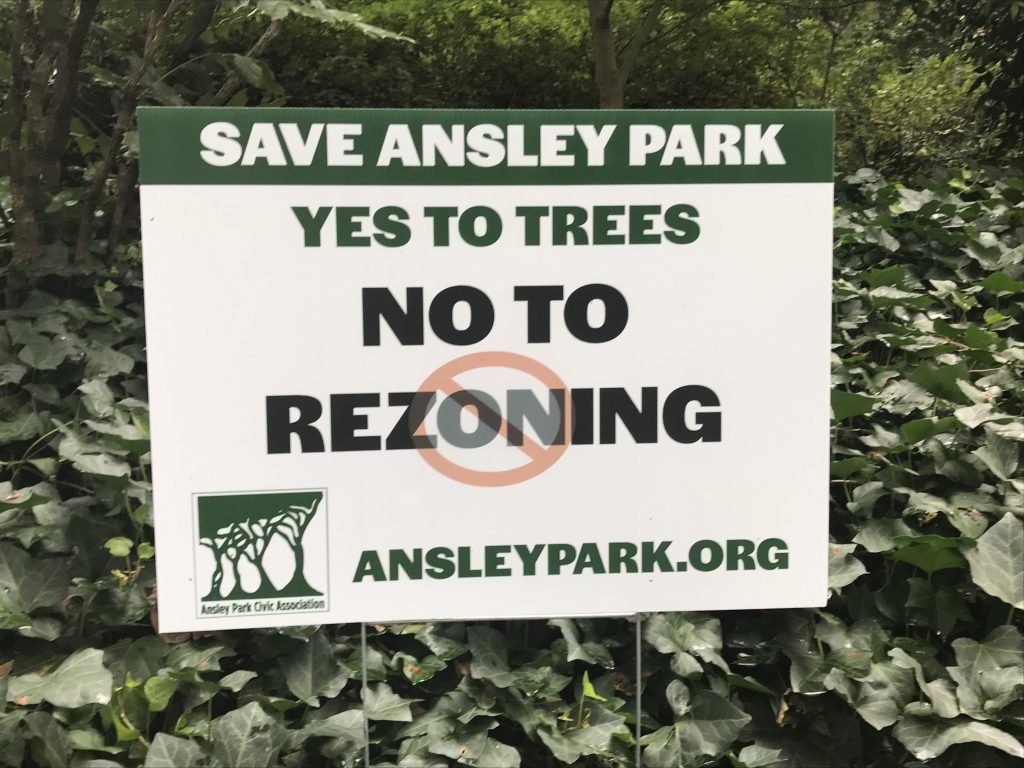Environment
Short Takes
Georgia’s new data center rule increases local controlDecember 1, 2025

By Mike Dobbins
July 20 – Many people don’t get zoning. Efforts to reform it abound. This report aims to help people better understand zoning and its relationship to affordable housing.
In Atlanta and around the country, zoning has become a hot topic. People are blaming zoning for all manner of ills, most prominently now for the housing affordability crisis. Initiatives launched by libertarian and real estate investment organizations have gained ground with calls to get rid of single family zoning. They argue that doing so will result in producing more affordable housing. It is not and will not. Why and how has this myth developed? Below we answer the question, beginning with a brief overview of zoning.
Zoning as a Tool
Zoning is a tool that people in power at the local level wield. Through the years, they have used it for both good and evil. Richard Rothstein’s book, The Color of Law, helped to raise consciousness of discriminatory use of zoning and other tools to discriminate, exclude, and otherwise stand in the way of those reaching for equity and justice. But zoning itself is only a tool, not the culprit. Instead, the people who have wielded it are responsible for how it is used.

Like a hammer, zoning can destroy, but it can also build. It’s on the people who manage it, usually local government, to put it to positive purposes, among which easing the affordability crisis can be one.
Zoning is not etched in stone. Rather, and as it should be, it is eminently changeable. In Atlanta and most other local jurisdictions zoning changes continuously, reflecting the evolving knowledge base, the value set, and the vision of the city council majorities that enact them.
Zoning is locally controlled. It is one of the few levers of power to which everyday citizens have access for shaping the future of their neighborhood or their property. People have a fair shot at exercising this access through their neighborhood organizations and their council members.
The process to move a zoning along usually involves notification and gaining responses from the neighborhood affected; consideration by a planning commission; followed by a recommendation to the city council for final action. (In Atlanta this trajectory runs from the neighborhood, to the Neighborhood Planning Unit, to the Zoning Review Board, and then to the Atlanta City Council).
As the usual “decider” of the outcome, council members spend a lot of time and effort to reach their decisions. Zoning changes, whether for individual projects or for modifying district boundaries or provisions, reflect the voices of their constituents. They bring valuable information and significant decisions closer to home.
When I arrived in Atlanta in 1996 as the city’s Commissioner of Planning, Development, and Neighborhood Conservation, there were a number of hot zoning change issues in play (as there always are). These usually counter pose the aims of the initiators of the change with those impacted by the likely outcomes. The role of the planning and development administrator is to find whether and how a project might support new investment and at the same time improve, or at least not damage, all those affected by that result.
The Olympic era was a pivotal moment in Atlanta’s history. The Olympics offered opportunities for major shifts in policy and action, in which land use planning, development, and zoning processes figured prominently. Accordingly, I prepared the council to expect changes that responded to both the changing development markets and community aspirations for quality of life improvements. Thus zoning reform would and did occur incrementally.
The Myth of Affordable Housing through Eliminating Single Family Zoning

With this context, let’s look in more depth at the sources and purposes of the call to abolish single-family zoning. The Cato Institute, with the support of the Mercatus Center, the Reason Foundation, the R Street Institute along with national powerhouse real estate and private equity investors, are the instigators. (The Cato Institute was founded in 1977 by Charles Koch, of Koch brothers fame). The call to action emanating from this movement is nationally organized with many local chapters, generally styling themselves under the rubric of YIMBY Action (for “yes in my backyard” where they really mean “yes in your backyard).
Their stated purpose through many years has been to shift public resources and authority, thus accountability, from public to private hands with no accountability. They have been very effective in this mission, succeeding in concentrating greater and greater wealth into fewer and fewer hands and stagnating the prospects for advance for nearly everyone else. Their success shows up in the ever-widening wealth divide and the concomitant weakening of governmental ability at all levels to do anything about it. Thus hamstringing zoning is just one more initiative to further their goals.
Their tactics for removing single family zoning are both clever and simple: Seize on the crisis of housing affordability, largely the result of “free market” real estate forces in the first place, to persuade people that those same practices can fix the problem. Lull city councils into believing that eviscerating single family zoning will result in densification, which in turn will generate affordable housing. Smooth over the fact that they and their citizens are ceding substantial control over their land development futures to “free” market real estate and development forces. For most cities, this means about two-thirds of their city’s land area that is presently in single family and duplex use.
Research is mounting to reveal that their affordability marketing ploy is a scam, not working on the ground. As a relatively new strategy, the effects are ominous. The cities that have tried it – Minneapolis, Seattle, Portland – are finding on average that less than one in ten of their residential building permits are being issued in single family neighborhoods, thus negligible densification. Where Accessory Dwelling Units and apartments are being built, housing costs and property taxes are rising.

The impacts, then, diminish affordability, dislocate people, and shatter neighborhood cohesion. These effects are hitting lower wealth and non-white neighborhoods especially hard because property is cheaper and safeguards against predatory practices are lacking. Looking further back in time, Vancouver, early in the game of relaxing zoning guardrails, has become North America’s least affordable city, according to a 2021 report by the global research firm, Oxford Economics.
These trends are likely to accelerate as private equity and institutional investors scoop up more and more single family territory. Over the last year, for example, private equity and institutional investors have accounted for more than 30 percent of all single family purchases in the Atlanta metro. Again, these purchases disproportionately afflict people of lower wealth where affordability is essential to maintain shelter.
The investors’ aim, of course, is to convert these holdings into single family rentals, taking advantage of lax landlord-tenant laws and anticipating zoning permissiveness to augment their gains. They are lobbying aggressively at the local, state and national level to wipe out local authority over zoning.
These outcomes underscore their true purpose. “Free” market real estate investment does not measure itself by how many families in need it shelters. On the other hand, removing obstacles to their bottom line, like zoning and pesky people trying to make their lives better, can and does deliver great benefit.
Finally, It is distressing to me that so many people whom I know to really care about the affordability crisis have signed on to this ruse. Readopting long discredited “expert”-driven, top-down, trickle down. “solutions” seems to reinstate both the power relationships and the cultural shocks of the bad, old urban renewal days.
Please let us not allow these forces to rip away one of the very few tools that ordinary citizens have to shape their futures. Let us instead turn that tool to join with others to chip away at the affordability crisis in ways that might actually work. And let’s hear no more fake news that eliminating single family zoning gets us there. It does not.
I urge all to simply google “YIMBY Action Cato Institute” and follow leads from there to gain greater insight into these dynamics. If you can find a single instance where the strategy has resulted in bringing housing costs down to where people of median family income or below can afford it, please let me know. In short, where’s the evidence? As it is and is becoming, shelter for half of Americans is increasingly at risk.

0